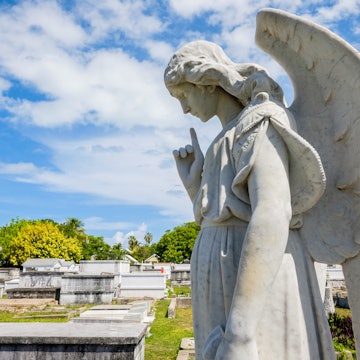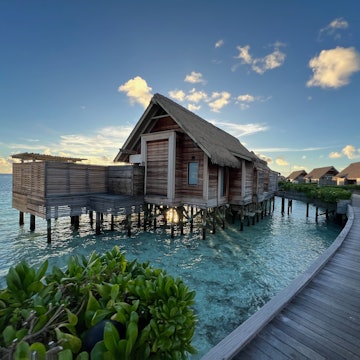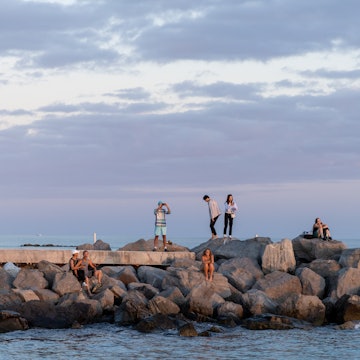

The Overseas Hwy in the Florida Keys. pisaphotography/Shutterstock
An introduction to fun-loving, sun-soaked Florida doesn’t get more vivid or more fun than this 10-day jaunt down the state’s Atlantic Coast to its (and the continental USA’s) southernmost point.
Traversing 205 miles from north to south, our itinerary will take you to South Florida’s most iconic attractions: Palm Beach’s waterfront mansions, Fort Lauderdale’s carefree canals, Miami’s glittering cosmopolitan scene, the Everglades’ natural bounty and the Keys’ fun-loving weirdos. In addition to lying out on fabulous beaches (duh), digging into just-caught seafood and sipping a mojito (or three), you can expect to encounter manatees, take in world-class cultural attractions and discover that in this region, dense cities lie just minutes from untouched nature.
Follow along with us – then start planning your own dream trip to South Florida.
How to get around
As in most of the USA, a car is the best way to tackle this route (and the only option south of Miami). While the north-south I-95 freeway, parallel to and a few miles in from the coast, is your fastest option, we recommend sticking to US Rte 1. This multilane thoroughfare passes through the downtowns of all of South Florida’s major cities (and crosses the impressive sprawl between them). South of Miami, it runs through Homestead (gateway to the Everglades), before reaching, via a series of impressive causeways that form the Overseas Hwy, Key West.
If you’re truly resistant to car culture, two train operators run services connecting Miami, Fort Lauderdale and West Palm Beach: state-run Tri-Rail, and private start-up Brightline.

Days 1–2: Admire (and lie out on) the beaches around Jupiter
Count on two days on the so-called Treasure Coast, an area known more for unspoiled nature than condos and cosmopolitans. Stop first in Jupiter, a pleasant town that despite rapid growth in recent years has retained a low-key vibe (especially compared with its neighbors to the south). Among its pretty parks, don't miss Blowing Rocks Preserve’s seaside “geyser” – a perforated rocky outcrop that “erupts” when high-tide waves lash it daily.
Move over, Maine: one of the oldest lighthouses along the USA’s Atlantic seaboard rises at Jupiter Inlet. Built in 1860, the 108ft-tall Jupiter Inlet Lighthouse continues to operate to this day, protecting ships from nearby reefs and shoals. Climb the 105 steps to the top to admire the panoramic views (joining a tour is mandatory), then visit the pioneer homestead, keeper’s workshop, and a Seminole chickee (a wooden platform above the waterline), built in 2009 to pay homage to the tribe’s long connection to the area.
While South Florida is practically flat as a pancake, its highest point lies just north of Jupiter: the Hobe Mountain observation tower (currently closed for renovation), which reaches the staggering altitude of…86ft. Nearby, on Jupiter Island, Hobe Sound Beach is probably the region’s best-kept secret. It’s guarded by lifeguards, friendly for pets and justifiably popular with locals, who’d prefer to keep it that way.
Planning tip: Be sure to bring footwear to Hobe Sound Beach, as the beach’s gray sand often gets scorching hot.
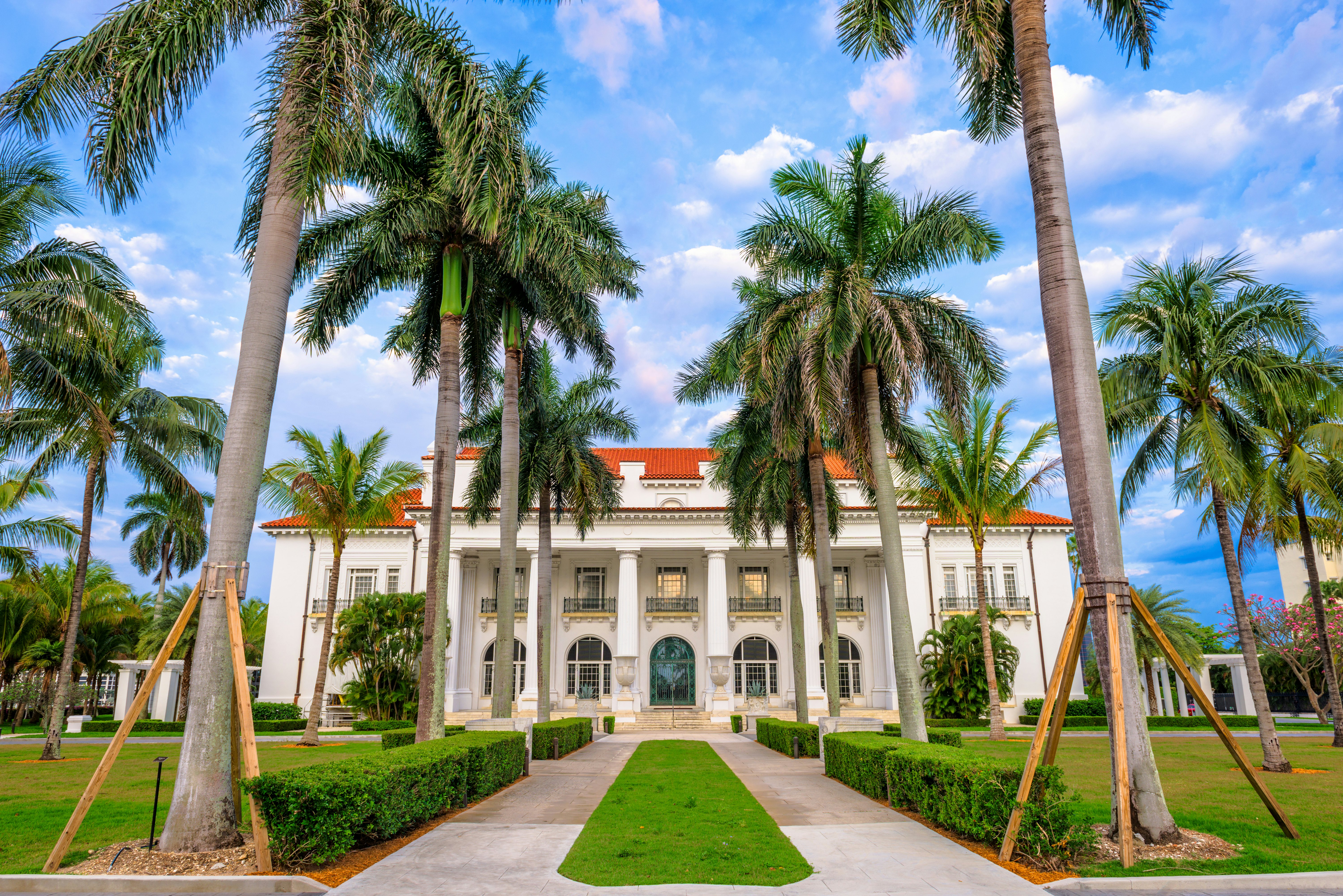
Day 3: Take in the poshness of the Palm Beaches
20 miles south of Jupiter
A sliver of opulence, sand and (yes) palms, the narrow barrier island of Palm Beach brims with palatial properties as well as the sun-kissed Palm Beach Municipal Beach. After you’ve window-shopped for bling along uber-ritzy Worth Ave (parallel park very carefully, lest you ding a Maserati), see how it all got started at the Flagler Museum.
This beaux-arts, Gilded Age extravaganza was built in 1902 by railroad tycoon Henry Flagler, whose forward-thinking and risky bet on laying track through what was then malarial swamps brought sun-deprived northerners to South Florida each winter – and launched the development boom that the region is still experiencing today.
Flagler stuffed his 75-room mansion with pink aluminum wallpaper (pricier than gold in the day), marble floors, Baccarat crystal chandeliers and Italian Renaissance details that form a pastiche of flashy decadence – surely a source of inspiration for Palm Beach’s current crop of notables (the most famous of whom is frequently in residence at, ahem, the “Winter White House” of Mar-a-Lago). Flagler was also the force behind The Breakers, a beachfront pile in the Renaissance Revival style that remains as luxurious a resort today as it did when it opened in 1901.
You’ll find a cooler, more contemporary vibe just across the Flagler Memorial Bridge. Founded as a town to house the workers who served the one-percent types across Lake Worth Lagoon, West Palm Beach today brims with fresh energy and entrepreneurialism – and has dining and nightlife scenes to match, which you can sample on Clematis St.
Manga-themed Kapow Noodle Bar pairs artfully crafted drinks with contemporary pan-Asian bites. Next door at Hullabaloo, musician-inspired cocktails are always a blast; nearby rooftop bar Spruzzo offers panoramic views to go with its top-notch cocktails and Mediterranean plates. After your meal, continue the fun with dancing at Clematis Social or live music at Respectable Street – or join the crowds at Clematis By Night, a free live-concert series at Centennial Square on Thursday evenings from 6pm to 9pm.
Detour: After discovering that the warm-water outflows from a local generating station attracted manatees during the winter, Florida Power & Light opened an eco-discovery center to celebrate these gentle giants. Two levels of observation decks let visitors view the manatees as they swim freely through the Intracoastal Waterway; the best viewing is from November to March.
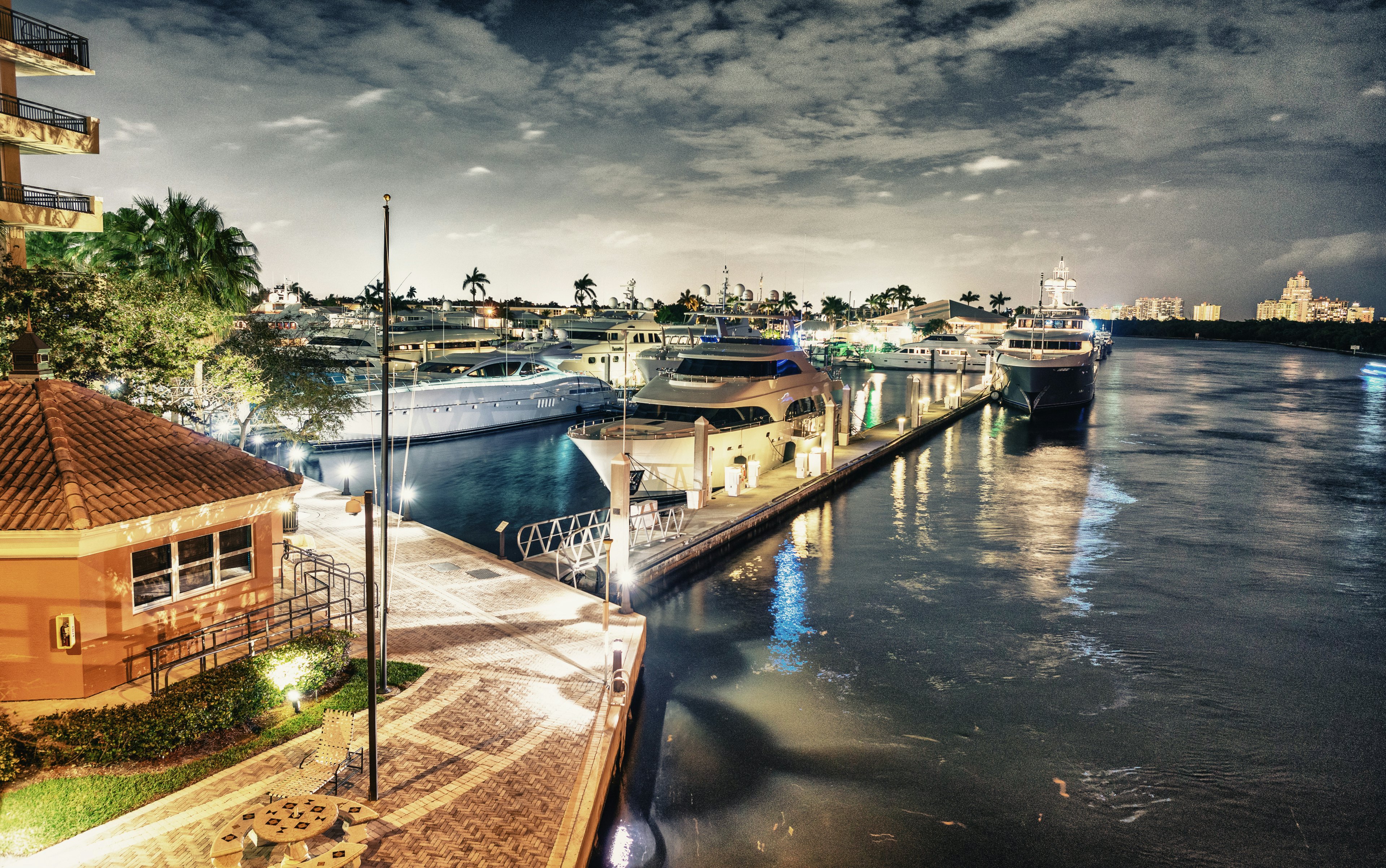
Day 4: Enjoy the pleasures of Fort Lauderdale
47 miles south of West Palm Beach
We recommend two days in this delight-filled town, where you can preen along the promenade amid skating goddesses and be-thonged gay men; ride a romantic gondola in the canals; and enjoy fine art and gourmet cuisine, among many other pleasures.
A hub for spring-breaking college students since the ’60s, Fort Lauderdale has evolved from 24-hour-party town to a refuge for more-subdued vacationers, appealing to sun worshippers, retirees, families and the LGBTIQ+ community. (Nearby Wilton Manors has one of the highest proportions of queer residents of any town in the world.) Boaters love it here: with 300 miles of inland waterways and over 50,000 yachts, it has earned the nicknames “Venice of America” and “Yachting Capital of the World.” Dining and drinking establishments are chic, and luxury hotels now line the A1A beach highway. Fort Lauderdale’s new, clean face attracts visitors of all ages.
As everywhere in Florida, a car is essential for getting around – yet Fort Lauderdale has appealing modes of transport that complement all the highway time. In a free electric rideshare vehicle offered by Micro Mover, you and up to four fellow passengers can tootle around some of the most tourist-busy parts of town, including the beach and downtown areas. And if you want to make like a local and take to the water, channel the real Venice in a vessel from Las Olas Gondola, which offers 75-minute romantic rides through the waterways accompanied by soft music and cocktails (BYOB). Or get a group together and jump aboard a modernized electric gondola at Riverfront Gondola Tours for a 90-minute exploration of the city via its canals.
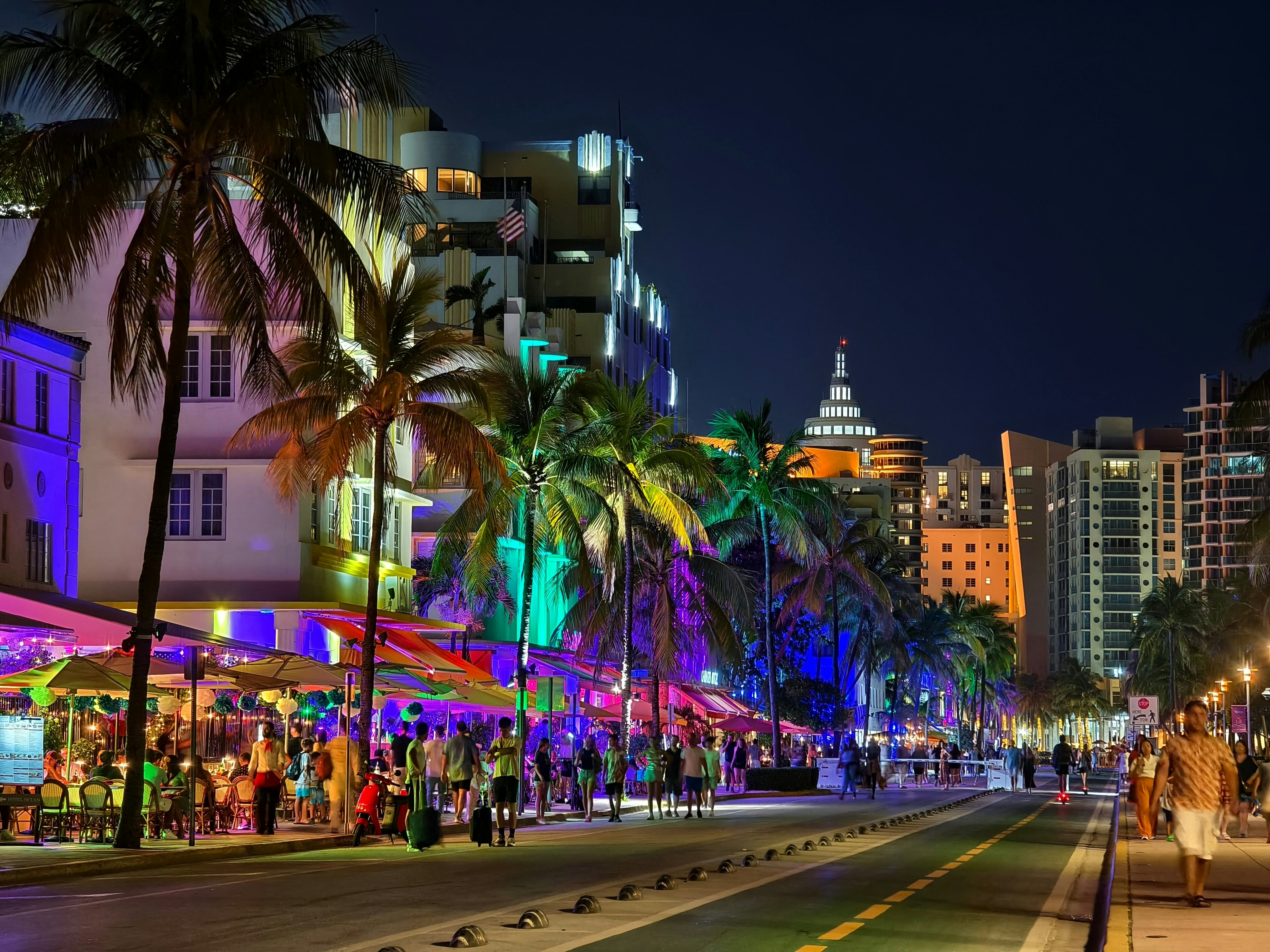
Days 5–7: Soak in the energy of Miami
30 miles south of Fort Lauderdale
Meriting three full days (or, really, three full weeks if time allows), Florida's most exciting city offers everything from pastel art deco hotels and hedonistic beach culture to Cuban sandwiches, Jewish delis, Haitian botanicas and contemporary art. Plus Latin hip-hop and mojitos, and punk shows, and graffiti art in a Wynwood warehouse, and the neon night of the skyline after dark… The list is almost endless.
Unique in the world, Miami is located at the point where North America, the Caribbean and Latin America meet – and it touts its diversity proudly. It’s no surprise that such a crossroads is also a hub of creativity, and from art and design to global cuisine, Miamians are constantly on the search for bold new ideas. The Wynwood Walls and the bayside Pérez Art Museum Miami are two cultural highlights of any visit here.
Lapped by emerald waters, Miami’s beaches are perfect for a sunrise stroll along peaceful stretches of Mid-Beach or scenic paddles in search of lollygagging manatees off Virginia Key. Admire colorful birds along the walking trails of Oleta River State Park and tropical gardens that dot the dense metropolis.
Few visit Miami without crossing Biscayne Bay to South Beach, where the gorgeous 1930s hotels that line Ocean Drive are part of the world’s greatest collection of art deco buildings. Tropical motifs, whimsical nautical elements and those iconic pastel shades create a cinematic backdrop for exploring the streets. Still, there’s more to this district than velvet ropes and luxury lodging. You’ll find great down-to-earth bars, good eating and cool museums, all against a backdrop of fetching buildings and swaying palms.
Planning tip: Miami may be famous for Cuban food, but with so many other cultural influences here, you can find incredible cuisines from Uzbekistan (Chayhana Oasis) and Nicaragua (Fritanga Montelimar), among many others.
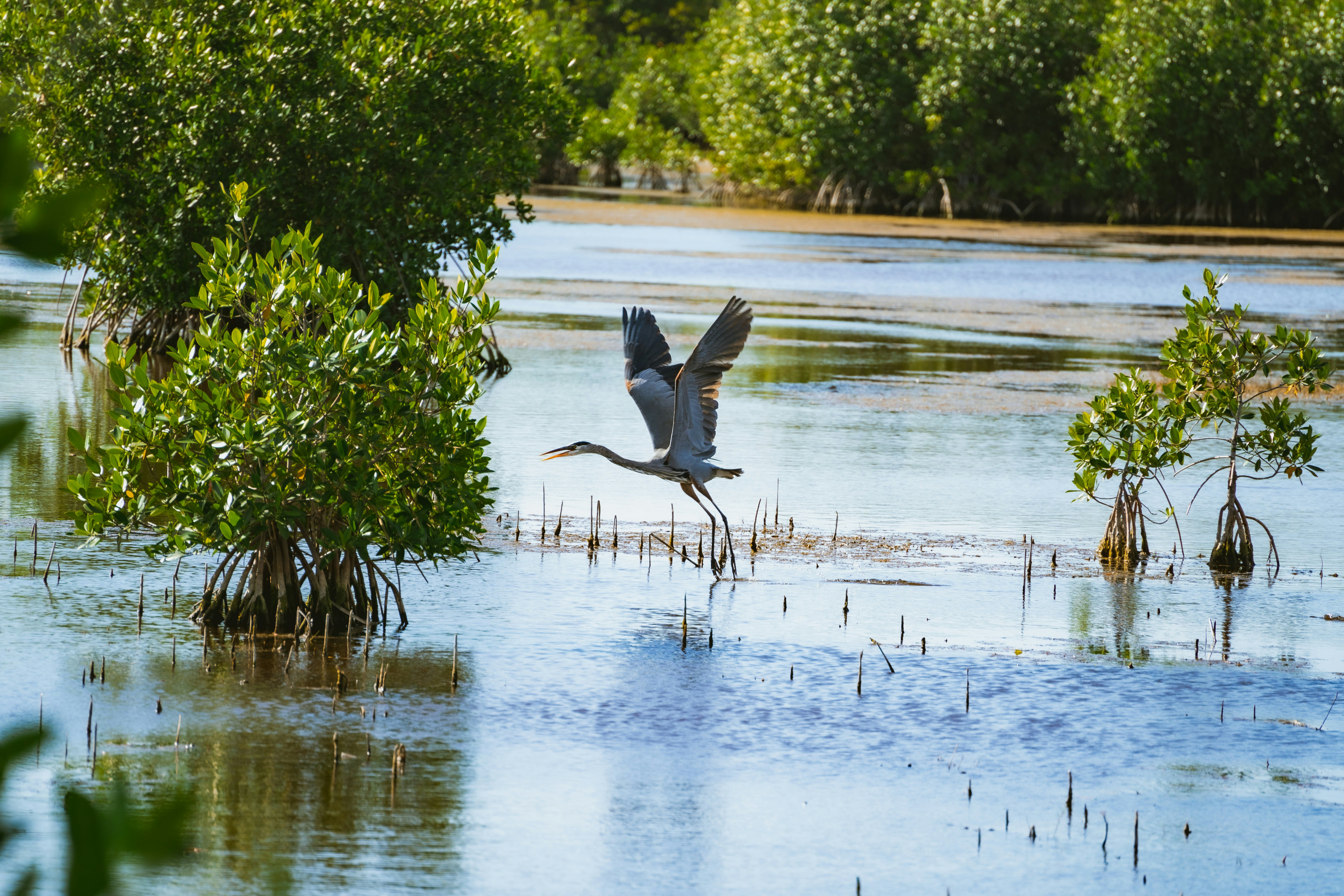
Day 8: Experience the ecological richness of the Everglades
Shark Valley Visitor Center: 40 miles west of Miami
Royal Palm Visitor Center: 54 miles southwest of Miami
Flamingo Visitor Center: 87 miles southwest of Miami
There’s no wilderness in the world quite like the Everglades – and even a one-day visit lets you sample its vastness. Called the “River of Grass” by its Native American inhabitants, this is not not just a wetland, lake, river or grassland: it’s all of these, twisted into a series of soft horizons, long vistas and sunsets, animated by an ever-changing cast of wild creatures.
Everglades National Park’s quiet majesty is evident in the sight of an anhinga opening glistening wings to the sun after a mid-morning feed; in the rhythmic flap of a great blue heron gliding over the mirror-like surface of a saturated prairie; or in the primeval silence of a cypress dome, broken only by a sapsucker’s hopeful tapping or the roar of an alligator. Out on Florida Bay, the marsh gives way to an expanse of shallow seabed, with manatees bubbling up to the surface and aquatic birds nesting by the thousands on mangrove-backed mudflats.
Four entrances (each one far from the others) provide access to the park, three of them on its eastern side. Approximately 40 miles west of Miami, the Shark Valley Visitor Center is home to the famous 15-mile paved Tram Road, great for cycling, walks and (yes) tram rides. Outside Homestead (through which US 1 passes directly), Royal Palm Visitor Center provides access to hiking trails (all under a mile), from strolls under canopy trees to walks on boardwalks over the marshland. The Flamingo Visitor Center, about 40 miles south of Royal Palm, is a gateway to the mangrove-draped Florida Bay, canoe trails and the 275-pitch Flamingo Campground.
Planning tip: Before visiting any US national park, visitors should be aware that recent staffing cuts at the National Park Service (NPS) are having an impact on the amenities available to visitors. Stay prepared with this guide.

Days 9–10: Go as far south as you can in the Keys
Key Largo: 30 miles south of Homestead
Key West: 127 miles southwest of Homestead
Finish off your trip with two days (or more) in the Florida Keys, a necklace of islands that trace an arc from the Everglades to the southernmost point in the continental US. As you follow US Rte 1, the mangrove forest that forms the South Florida coastline gives way to bright blue water as you cross the causeway into Key Largo. Among many touristy options in the gateway to the Keys, you can still find a more local joint for delicious conch fritters and key lime pie. (We love rustic-feeling waterside Skippers Dockside, and low-key Shipwreck’s Bar & Grill.)
As you continue along the Overseas Hwy, you might consider a stop to go tarpon fishing in Islamorada, or beach napping at Bahia Honda State Park – yet you should count on driving its full 113-mile length to reach Key West, the end of the Keys and a universe unto itself.
Here, serene landscapes and historic architecture are leavened with fascinating cultural history and an ever-partying spirit. Culture and history buffs can visit Key West Cemetery, and Ernest Hemingway’s old mansion (say hi to the six-toed cats for us). By choice or not, you’ll inevitably lose yourself amid the colorful Caribbean-style villas of OId Town. On Duval St, Jimmy Buffett–inspired retirees rub shoulders with drag queens and spring breakers. And each evening at Mallory Square, circus performers, musicians and magicians compete for visitors’ attention (and tips) as the sun sets in the distance – an indelible memory of a most memorable trip.
This article was adapted from the 11th edition of Lonely Planet’s Florida guidebook, published in August 2025.












